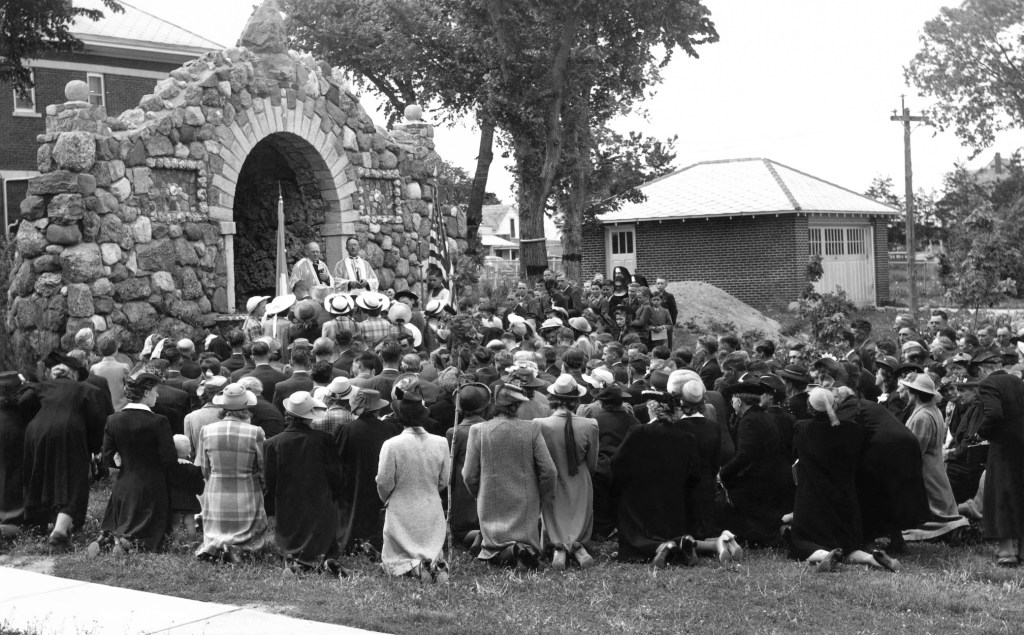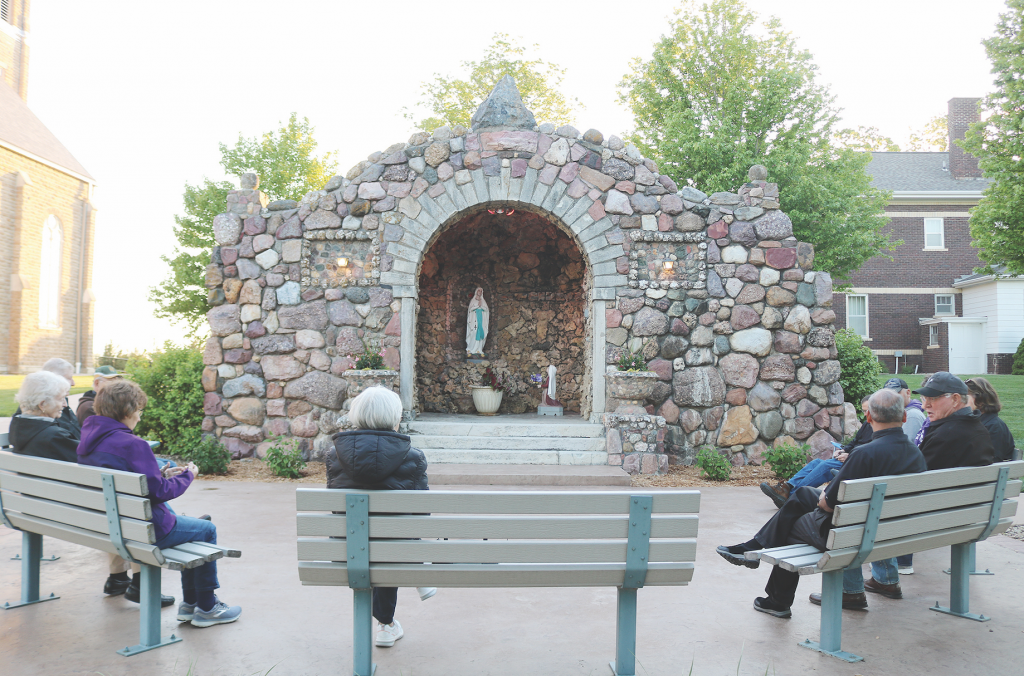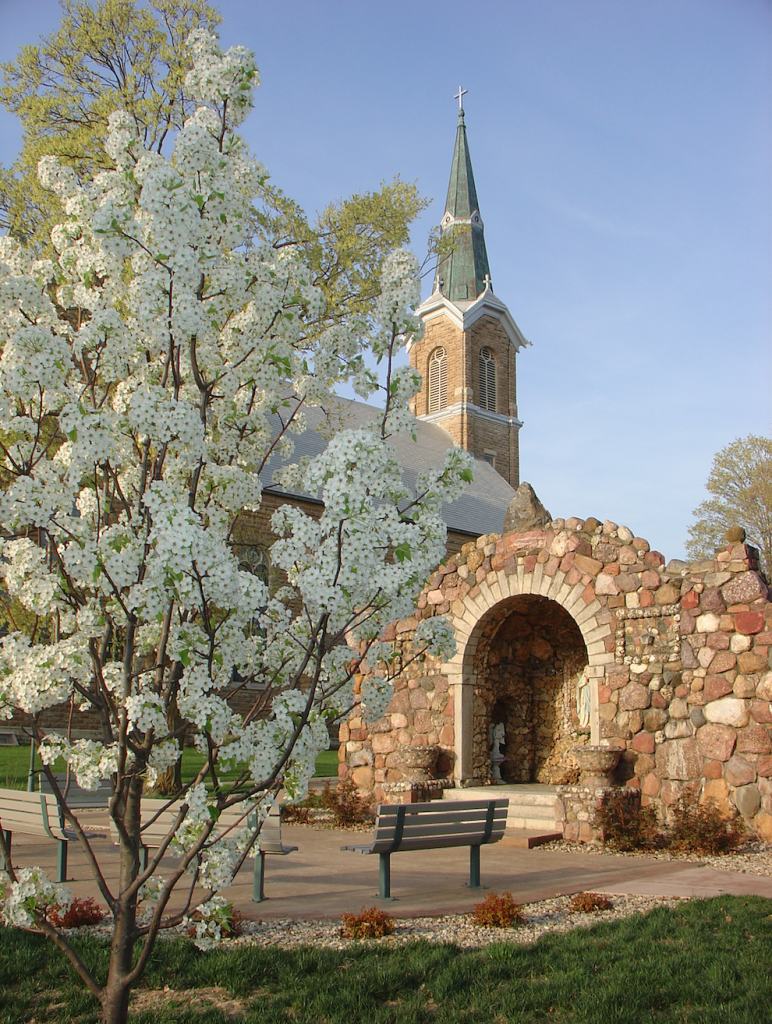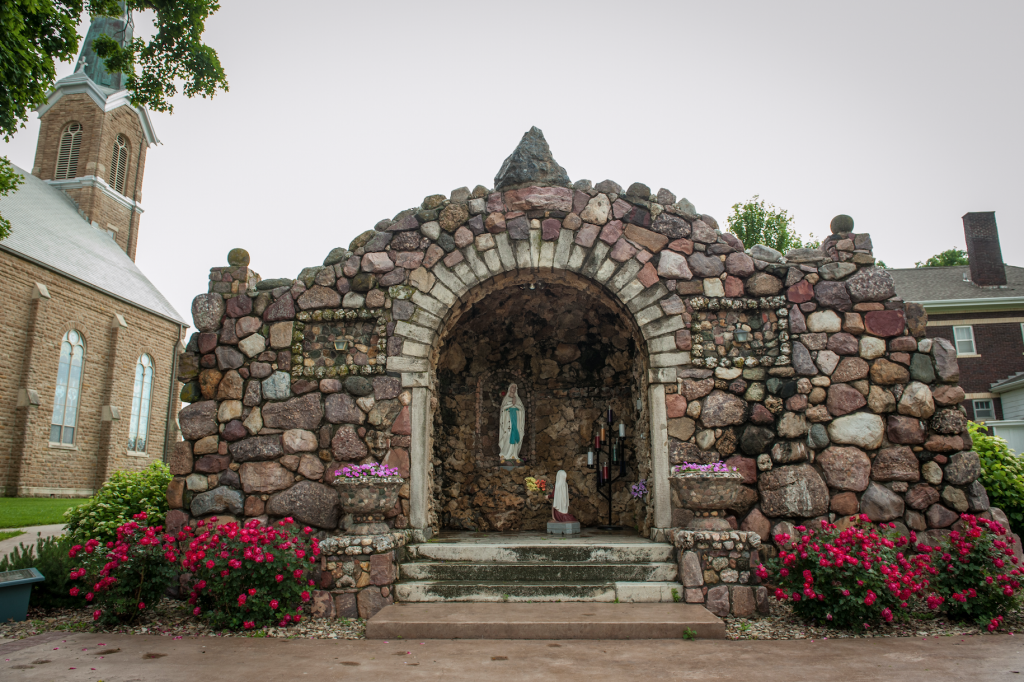
by Marc and Julie Anderson
mjanderson@theleaven.org
ST. BENEDICT — There’s no better place to be on a Wednesday night.
This tiny unincorporated community’s parish church and grotto sit on Highway 178, just four miles from the western edge of Seneca, the seat of Nemaha County.
Located just south of the Kansas-Nebraska state line, Nemaha County is one of the archdiocese’s northernmost counties. With a population of slightly more than 10,000, many of the county’s residents farm and/or live on rural lands that have been in their families for generations.
Starting in May, St. Mary parish members gather every Wednesday night through the end of September to pray the glorious mysteries of the rosary. The weekly practice dates back more than 25 years. But the grotto has served as a gathering place for praying the rosary for more than 80 years.

In 1936, while the country was still in the throes of the Great Depression, pastor Father Cyril Bayer, OSB, decided that as a visible sign of the parish’s devotion to the Blessed Virgin, the parish would build an outdoor grotto reminiscent of the one found in Lourdes, France.
Under the pastor’s leadership, young men of the parish began constructing the grotto.
After the United States entered World War II in 1941, however, many of those same young men — more than 60 parishioners in all — left this close-knit community for service of a different kind, not knowing when or if they would return.
Father Cyril, still pastor, was determined the parish would do its part. He announced that parishioners would gather for a rosary every night and pray for two specific intentions: the safety of the parishioners serving in the war and for a quick end to the war.
The results were nothing short of astounding. Although Frankfort, a town of about 1,200 at the time and located some 30 miles away, lost 32 men during the conflict, not one solider from St. Mary Parish lost his life during the war. Parishioners credited the men’s safety to the intercession of the Blessed Virgin.
One soldier that parishioners recall is the late Melvin Bergman.
During World War II, Bergmann joined the U.S. Navy. Serving as an aviation boatswain’s mate, he found himself aboard the USS Enterprise, an aircraft carrier and the most decorated ship of the war effort. Of the more than 20 major actions in the Pacific Theater, the USS Enterprise was involved in all but two, including the Battle of Guadalcanal, the Battle of Midway and the Battle of the Philippine Sea.
St. Mary parishioner Don Lueger said Bergman was aboard the Enterprise when either a torpedo or kamikaze hit the carrier, killing Bergman’s bunkmate.
But Bergman was spared and survived the war to return home, working in both the family store and a factory in Dyersville, Iowa. He died in 2013 at the age of 88.
Years later, when men were called up to fight in both the Korean and Vietnam conflicts, parishioners again gathered for prayer at the grotto.

One who remembers praying at the grotto is Patty Stallbaumer.
Born in 1937, she was just 8 years old when World War II ended in 1945. In an article published in 2006 in The Leaven, Stallbaumer said, “I remember being just a little person among all the big people. But I remember we prayed the rosary every night.”
Stallbaumer later recalled that in the 1950s when her late husband Jim and so many other men across the country fought during the Korean War, the whole parish community gathered at the grotto once more. Although her husband was wounded, he, like all the others from the parish, came home from the war.
In the 1960s, the parish once again turned to the Virgin Mary and implored her intercession as another group of young men headed off to fight in the Vietnam War. Again, not a single man from the parish was killed in action.
So, it’s probably no surprise that the grotto has since become a gathering place for people to come together in prayer. Although the grotto has seen May crownings, first Communion processions and even a first Mass for one of its native sons who became a priest, the main focus has always been the rosary.

In 1996, Stallbaumer started leading a weekly rosary, sometimes herself and sometimes with tapes and CDs.
“We started with cassettes,” added parishioner Lillian Engelken, “and we used to pray all the mysteries.”
In the end though, she said, the parish community decided to use a set of meditations for the glorious mysteries offered by Vincentian Father Kevin Scallon, founder of the Intercession of Priests.
Although the parish only gathers weekly to pray the rosary, most days you’ll still find someone praying at the grotto. They might not even belong to the parish — tourists have come from all over the world.
Father Regie Saldanha, a priest from the city of Mangalore, India, and the current administrator of the parish, appreciates the community’s rich tradition of praying the rosary together.
“I am very much taken by the history behind it, especially starting with World War II,” he said. “And I am glad that folks are continuing the tradition. It’s a beautiful example for our children.”
For Engelken, the main lesson she wants people to remember is simple.
“Mary answers our prayers,” she said.






